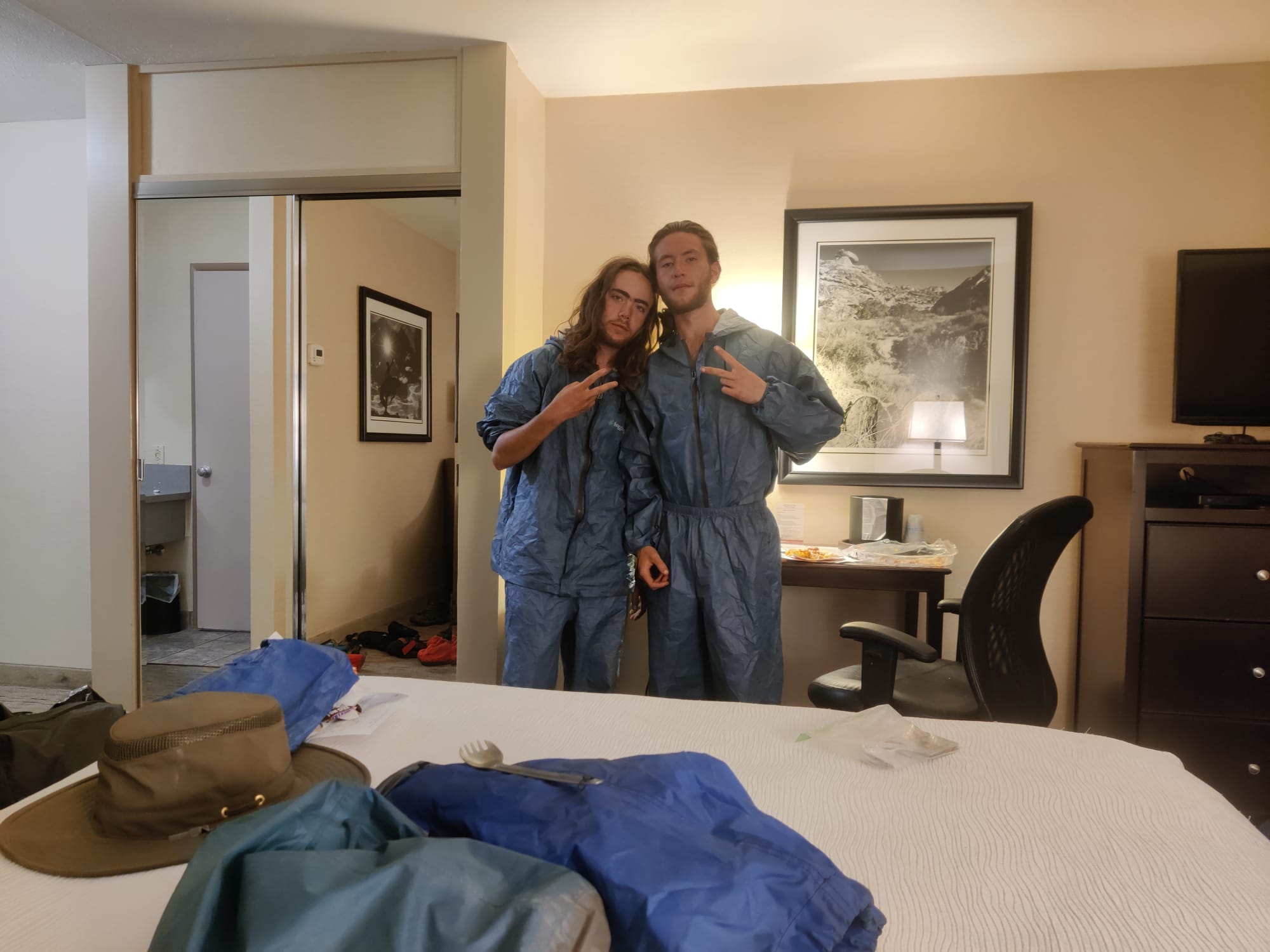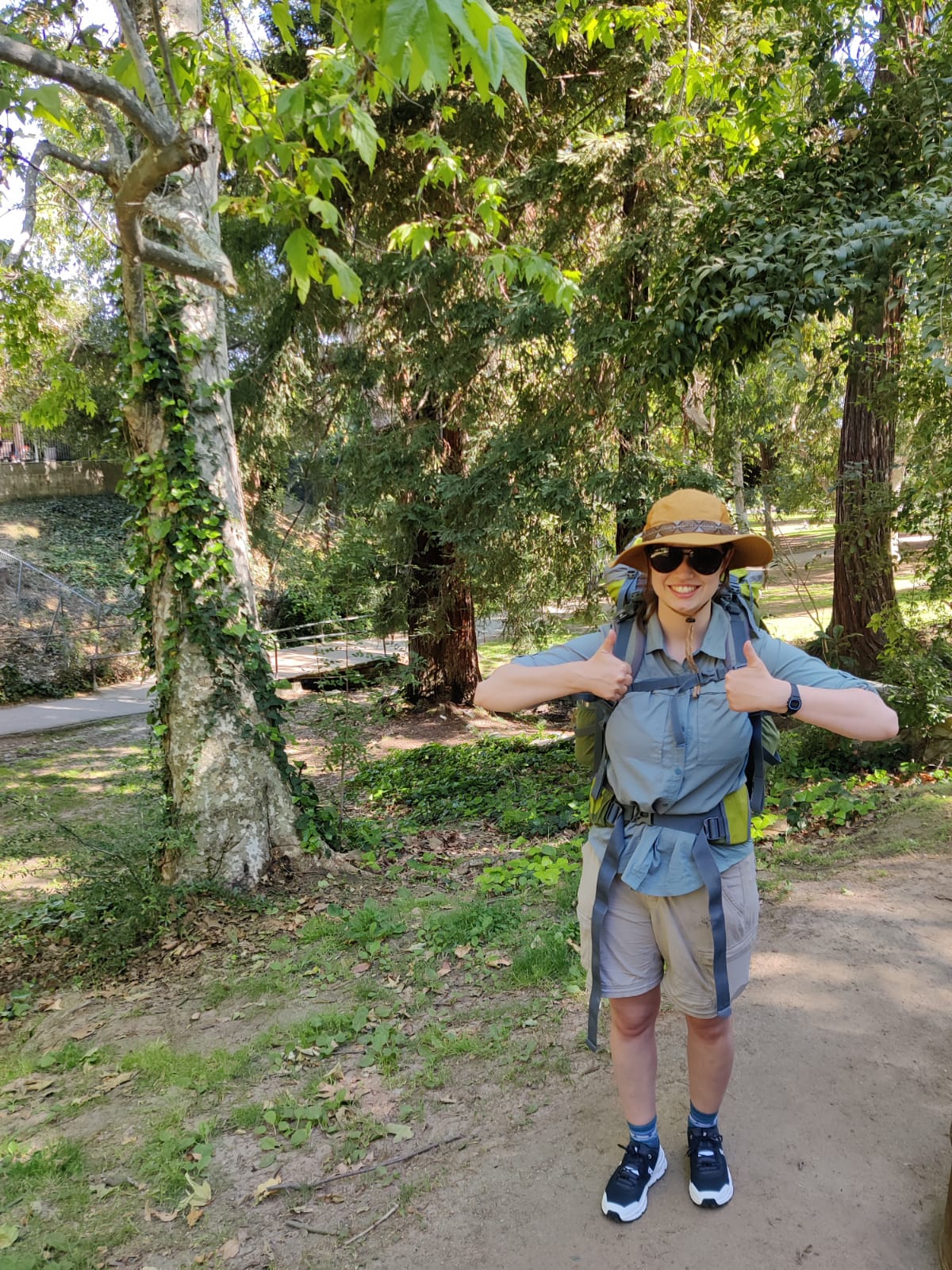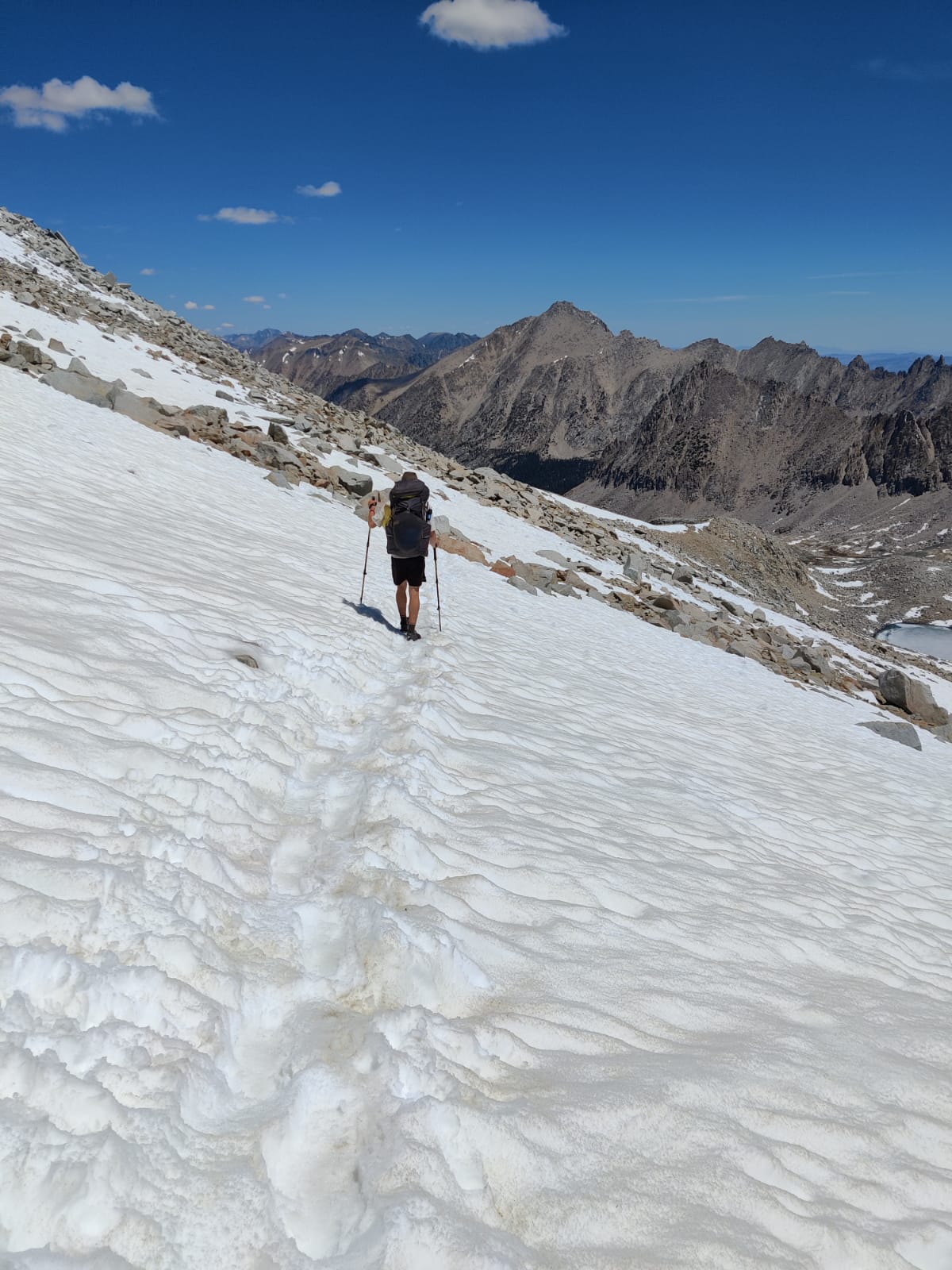9 Mistakes I Made on my PCT LASH (Spoiler: Everything Still Turned Out OK)
No hiker does everything perfectly. Last summer, I hiked over 500 miles of the PCT in the desert and the Sierra Nevada. Before my hike, there were plenty of popular pieces of advice I either wasn’t aware of, didn’t have time for, or blatantly ignored. Taking that advice would have made my hike easier and more enjoyable— but even with the mistakes I made, my hike went smoothly and I had a great time. So my advice is twofold: don’t make the mistakes I did, but also don’t sweat it if you do, because very few mistakes are actually hike-ending.
1. No Shakedown Hike
I live in a mid-sized city several hours’ drive from the nearest cool backpacking spots, and I don’t own a car. I also left for California about three days after I finished my last final paper for school. Nevertheless, I should have done a shakedown hike. It would have helped me become familiar with my gear, shed some of the weight I didn’t need, and get into better hiking shape.
On the other hand…
At the end of the day, a long-distance backpacking trip is only a series of 3-6 day trips with rest days in between, so I had plenty of chances to correct my mistakes on the go. My first two weeks on trail ended up being my de facto shakedown, and even though it affected my experience of those weeks, before too long I felt great with everything I had.

This photo was taken over a month into my hike. I panic-bought a lighter backpack before trail. I sent home my convertible hiking pants, preferring to hike in athletic shorts. My original hat was lost in a windstorm, so I bought a new one in Kennedy Meadows.
2. Not Enough Research
During my planning stages, I steered clear of most online gear lists and recommendations, which felt overwhelming. I preferred to just speak in person to the salespeople at REI, who weren’t necessarily familiar with long-distance backpacking.
I ended up hiking in shoes with a relatively high drop and switching to a lower drop halfway through my hike. The lower drop was a difficult adjustment for my feet and exacerbated some pretty serious Achilles tendinitis. I had to end my hike a hundred miles south of my goal of Sonora Pass.
If I had done more research beforehand, I would have purchased a lower drop shoe several months before my hike. This would have given my body time to gradually adjust before I was hiking long days.

A view of Half Dome from Yosemite Vally. If I’d been rushing to reach Sonora Pass, I might not have taken a day off to enjoy one of the most beautiful National Parks in the U.S.
On the other hand…
Even though I didn’t make it all the way to Sonora Pass, I still made it to Tuolumne Meadows. I took relaxing day off to enjoy Yosemite Valley, and a few extra days off in Mammoth Lakes ended up giving me a chance to grow closer with some fellow hiker trash. If I’d been rushing at the end of my trip, I might not have stopped to enjoy myself.
3. No Training
My theory was that I would start slow and train on trail. What I didn’t understand though, was that training is also important for injury prevention. If I had engaged in more strength and mobility training before trail, my tendinitis may not have been so debilitating. Also, it was hard not to feel inferior to the dozens of hikers whizzing by me, already hundreds of miles into their trek.
On the other hand…
Even though I had to start slow, I was up to 15 miles a day by my second week, and 20 miles a day in the Sierras by my fourth, and I ended my summer in the best shape of my life.
4. Figuring out life from the trail
I needed to move apartments, and the leases transferred on June 1st, a month into my hike. This meant that I couldn’t move anything into my new place before I left. I had to take breaks in the desert wherever I had service, to text my old roommates, new roommates, subletters, and younger brother, trying to coordinate how to get everything where I needed it to be.
I summited Mt. Whitney on June 1st, which was lucky because it meant I had some phone service the day of the move. It was also unlucky because instead of reveling in the sunrise at the highest point in the continental U.S, I was on the phone.
On the other hand…
I would have enjoyed the first month of my hike more if I wasn’t stressed about off-trail logistics, but there wasn’t much more I could have done. I’m glad that I chose to coordinate from afar as opposed to delaying or canceling my hike over details that I didn’t quite have figured out beforehand.

Summiting Mt. Whitney at sunrise. A few minutes after this picture was taken, I took advantage of the only phone service in the next 200 miles to discuss moving logistics for an hour.
5. Hiked Too Late in the Day
I was very committed to my eight hours of sleep, and my group tended to finish hiking well into the evening. In the desert, it was already hot when I left camp, and in the Sierra, I usually hit the snowy passes around midday. Instead of coasting over firm, crunchy snow, I had to slog through slush, sinking up to my knees and thighs every other step. I spent many an afternoon in a foul mood brought on by the slow, frustrating progress of constant post-holing.
On the other hand…
Eventually, I learned to accept it as one of the struggles of hiking, and then I could relax and enjoy some of the most spectacular scenery I’ve ever seen.
6. Didn’t Send Boxes
All the advice I saw online advised against relying exclusively on resupply boxes. I took this to mean I shouldn’t send any boxes at all. If I could do it again, with a little more time and organization, I’d try to dehydrate my own meals to send to myself on trail. Long-distance hikers are athletes, and no professional athlete would recommend fueling exclusively on boxed mac and cheese and instant mashed potatoes.

A normal trail lunch: tortilla with peanut butter and potato chips. You can imagine how quickly I got sick of it. What I wouldn’t have given for some dehydrated veggies…
It would have been a game-changer to be able to have filling, delicious, nutritious meals. I don’t recommend trying to ship yourself all the food you’ll eat for six months— it sounds like a logistical nightmare, and your plans and tastes might change. If you can dehydrate at least some of your own meals, though, being able to eat high-quality food on trail could greatly improve your experience.
On the other hand…
If dehydrating your own meals isn’t feasible, resupplying exclusively on trail is very possible. Also, if you time it right, VVR, MMR, and Red’s Meadow have amazing hiker boxes. I found a bag of dehydrated veggies at Red’s Meadow that I threw in my mac and cheese for weeks.
7. Didn’t Have a Clear Sense of Budget
My idea of a budget was “try to not spend too much money in towns.” While I did spend less than many other hikers, I spent more than I was expecting. It’s hard to motivate yourself to get back on trail after finishing all your town chores in the evening, but every time I decided to stay in town for a night I woke up with many fewer dollars. Not to mention unexpected gear replacements and the two days I took to rest when dealing with my tendinitis. Add that to the cost of my normal resupply and a decent meal or two, and I quickly lost track of how much I was spending.

Laundry day in town. It was hard to resist spending the extra five dollars so I could wear some clean clothes. Even harder to resist a shower and motel room for the night.
It’s inevitable to spend time in towns. You’ll want the creature comforts of a shower, a bed, and a good meal: but I wish I’d had a clearer sense of how much I was spending, done a better job at predicting expenses that caught me off guard. This would have helped me make decisions based around actual facts, and not around whether or not something “felt” expensive.
On the other hand…
I was lucky that I’d saved enough money beforehand that I was not at risk of running out of money on trail. I just didn’t have as much saved up at the end of my hike as I would have liked. So try to be conscious of how much your spending, but DEFINITELY try to have enough saved up that if you go slightly over your own budget, you will be able to continue hiking. Also, I did meet a hiker who was working at Grumpy Bear’s restaurant for a few weeks to earn some cash, because he’d spent more than he had budgeted in the first part of his hike. There are a few other places on trail where you can work-for-stay, or possibly even take some time off to save up.
8. Didn’t Take Good Enough Care of My Gear
My biggest blunder here was cowboy camping without a footprint. My pad punctured, and none of the patches stuck. To try to repair it, I needed access to a bathtub and rubber cement, which meant multiple days in town. Compared to the price of two or more town-days, it made sense to just buy a new sleeping pad. I winced when I handed over my credit card, feeling like I was flushing $100 down the drain because I hadn’t babied my gear. Taking good care of your gear will help it last longer, and will ultimately save you money.

I also didn’t baby my personal hygiene. There’s no reason my face needed to get this dirty. I just wasn’t careful about not touching it with dirty hands. It led to some very embarrassing encounters in town, before I had the chance to peek in a mirror.
On the other hand…
I had enough saved up that I could replace my gear without ending my hike. Also, it was freeing in a way to feel like I didn’t have to work to enforce boundaries between my body, my things, and the nature we would be living in for months.
9. Didn’t Own the Hike I Ended Up Hiking
Everyone knows that you’re supposed to “hike your own hike.” During the year and a half of COVID, I felt a total loss of agency. I thought I needed the hike to regain control over my decisions. But I wasn’t hiking in a vacuum. I was hiking with my partner and our friend, who both also needed to balance their needs and goals. It was important to us to all stay together, and so we all had to compromise.
They were both leaving the trail earlier than me, so I figured I’d be able to really “hike my own hike” in my last two weeks alone on trail. Unfortunately, that’s when my tendinitis hit. When I realized that I needed to make decisions around my injury, I burst into tears. I’d put too much stake into controlling every detail of these last weeks, and instead, my body was controlling me.
On the other hand…
I had to accept that this hike was my own hike— I simply needed to be around people I loved more than I needed to control every last detail of my day. Maybe another time I’ll hike alone, but this summer taught me the importance of flexibility when a pipe dream doesn’t manifest perfectly. I was still out there having a great time, made all the greater because I was with some of my favorite people in the world.
All this to say, everything will turn out OK. Or at least, most things will. It’s easy to internalize the idea that if you don’t follow every last word of every advice piece ever published about long-distance hiking, you’re doomed from the start. If you can’t do a shakedown hike, if you don’t have time to arrange all your affairs before you hit trail, if your gear isn’t perfect, it’s all OK. Just take a deep breath, try to enjoy yourself, and be in the moment as best you can.
Featured image: Graphic design by Jillian Verner (@yourstrulyjillian).
This website contains affiliate links, which means The Trek may receive a percentage of any product or service you purchase using the links in the articles or advertisements. The buyer pays the same price as they would otherwise, and your purchase helps to support The Trek's ongoing goal to serve you quality backpacking advice and information. Thanks for your support!
To learn more, please visit the About This Site page.

 ">
">




